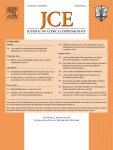
Fragility Index to aid in the interpretation of significant findings from RCTs

Fragility Index to aid in the interpretation of significant findings from RCTs
The statistical significance of randomized controlled trial results is frequently fragile: a case for a Fragility Index
J Clin Epidemiol. 2014 Feb 5. pii: S0895-4356(13)00466-6. doi: 10.1016/j.jclinepi.2013.10.019Synopsis
While P-values in clinical studies are an easy method to denote statistical significance, the interpretation of significant findings can be somewhat skewed. The Fragility Index is a newly developed metric that complements p-values and confidence intervals. It is calculated by adding consecutive events to a significant dichotomous finding until the result is no longer significant. The number of eve...
To view the full content, login to your account,
or start your 30-day FREE Trial today.
FREE TRIAL
LOGIN
Forgot Password?
Explore some of our unlocked ACE Reports below!

Learn about our AI Driven
High Impact Search Feature
Our AI driven High Impact metric calculates the impact an article will have by considering both the publishing journal and the content of the article itself. Built using the latest advances in natural language processing, OE High Impact predicts an article’s future number of citations better than impact factor alone.
Continue



 LOGIN
LOGIN

Join the Conversation
Please Login or Join to leave comments.